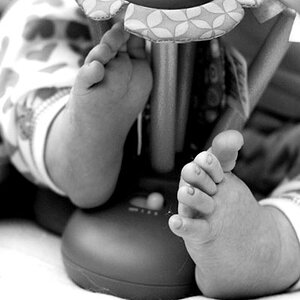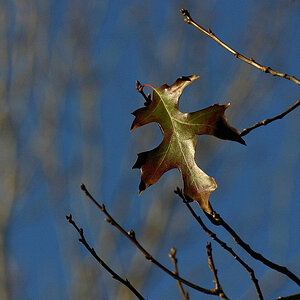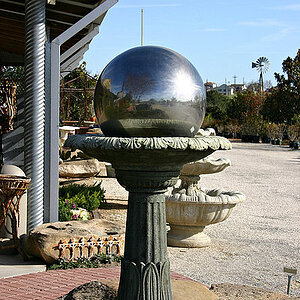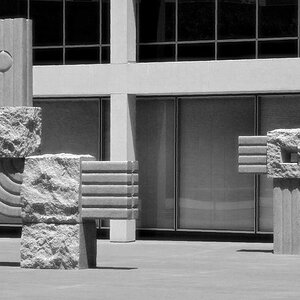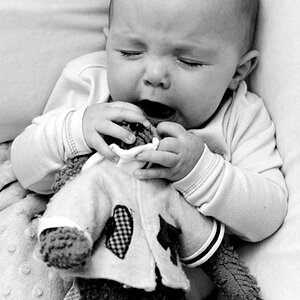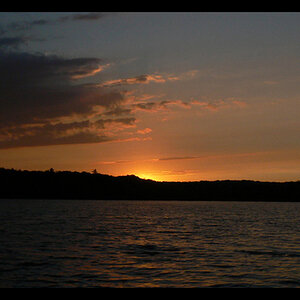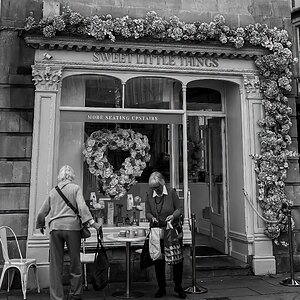Navigation
Install the app
How to install the app on iOS
Follow along with the video below to see how to install our site as a web app on your home screen.

Note: This feature currently requires accessing the site using the built-in Safari browser.
More options
You are using an out of date browser. It may not display this or other websites correctly.
You should upgrade or use an alternative browser.
You should upgrade or use an alternative browser.
slide vs. negative
- Thread starter Youngun
- Start date
ksmattfish
Now 100% DC - not as cool as I once was, but still
- Joined
- Aug 25, 2003
- Messages
- 7,019
- Reaction score
- 36
- Location
- Lawrence, KS
- Website
- www.henrypeach.com
- Can others edit my Photos
- Photos NOT OK to edit
A few years ago I would have said shoot negs if you need prints, but these days it's cheap to get a print from slide.
A big advantage that a slide has is that it's fairly color accurate so that a print can be compared to it. A neg looks nothing like the print, so the printer has to make their own judgements.
Easier to scan a slide. Color negs have a nasty orange base that's hard to color correct for.
Print film is said to have better exposure latitude, because in the printing process over and under exposure can be corrected for. Slide film needs to be exposed right on the money, or you'll see it in the slide. Possibly though, now that there is lots of digital printing going on, maybe prints from slides can be corrected as easily as print film?
Slide film tends to be more contrasty. This can be good or bad depending on the situation.
A big advantage that a slide has is that it's fairly color accurate so that a print can be compared to it. A neg looks nothing like the print, so the printer has to make their own judgements.
Easier to scan a slide. Color negs have a nasty orange base that's hard to color correct for.
Print film is said to have better exposure latitude, because in the printing process over and under exposure can be corrected for. Slide film needs to be exposed right on the money, or you'll see it in the slide. Possibly though, now that there is lots of digital printing going on, maybe prints from slides can be corrected as easily as print film?
Slide film tends to be more contrasty. This can be good or bad depending on the situation.
- Joined
- May 15, 2003
- Messages
- 5,275
- Reaction score
- 17
- Location
- Gilbert, AZ
- Website
- www.voodoocat.com
- Can others edit my Photos
- Photos NOT OK to edit
Yes it is to an extent. But it's more sensative to underexposure. Most of the time, overexposure for better saturation in slide film and underexpose for negatives. So it's generally better to slightly overexpose.Sash[DSL said:]i heard that slide film is much more sensitive to overexposure
ksmattfish
Now 100% DC - not as cool as I once was, but still
- Joined
- Aug 25, 2003
- Messages
- 7,019
- Reaction score
- 36
- Location
- Lawrence, KS
- Website
- www.henrypeach.com
- Can others edit my Photos
- Photos NOT OK to edit
:scratch: It's the other way around. :green to:
General rule of thumb is to overexpose neg film and under expose positive film.
A slight ( like 1/3 or 1/2 stop ) underexposure of positive film (slides) results in an increase in saturation; overexposing a slide will give it a washed out appearance.
Overexposing negative film (print film) insures shadow detail, and can also increase saturation somewhat.
Also, I don't think it's necessarilly accurate to say that slide film is more sensitive to overexposure than neg film. It's that the slide is the end result, and if you don't get the exposure right, you're going to see it. While if you don't get the exposure right with a neg, you still have another step in which some correction may be done: the print. An under or overexposed neg shows similar density variation as slides, but who's looking at the negs? People are looking at the print. I'm sure that these days with Adobe PS, and digital printing folks are able to squeeze a little more latitude out of their prints from slides too.
General rule of thumb is to overexpose neg film and under expose positive film.
A slight ( like 1/3 or 1/2 stop ) underexposure of positive film (slides) results in an increase in saturation; overexposing a slide will give it a washed out appearance.
Overexposing negative film (print film) insures shadow detail, and can also increase saturation somewhat.
Also, I don't think it's necessarilly accurate to say that slide film is more sensitive to overexposure than neg film. It's that the slide is the end result, and if you don't get the exposure right, you're going to see it. While if you don't get the exposure right with a neg, you still have another step in which some correction may be done: the print. An under or overexposed neg shows similar density variation as slides, but who's looking at the negs? People are looking at the print. I'm sure that these days with Adobe PS, and digital printing folks are able to squeeze a little more latitude out of their prints from slides too.
- Joined
- May 15, 2003
- Messages
- 5,275
- Reaction score
- 17
- Location
- Gilbert, AZ
- Website
- www.voodoocat.com
- Can others edit my Photos
- Photos NOT OK to edit
Hrmm.. I guess I have it backwards... but with Velvia 50 most people overexpose by 1/3 stop.
AIRIC
TPF Noob!
- Joined
- Jul 27, 2004
- Messages
- 4,801
- Reaction score
- 83
- Location
- Brooklin, Ontario, Canuckia
- Website
- www.airic.ca
- Can others edit my Photos
- Photos NOT OK to edit
As well, most professional or semi-professional photographers shoot slides because it prints better in magazines and adds and is most desired by editors. Underexpose the slides and overexpose the print film.
Cheers,
Eric
Cheers,
Eric
AIRIC
TPF Noob!
- Joined
- Jul 27, 2004
- Messages
- 4,801
- Reaction score
- 83
- Location
- Brooklin, Ontario, Canuckia
- Website
- www.airic.ca
- Can others edit my Photos
- Photos NOT OK to edit
I would bet the lab chemistry had an effect on the way they look. It is hard to say without looking at them.
Eric
Eric
AIRIC
TPF Noob!
- Joined
- Jul 27, 2004
- Messages
- 4,801
- Reaction score
- 83
- Location
- Brooklin, Ontario, Canuckia
- Website
- www.airic.ca
- Can others edit my Photos
- Photos NOT OK to edit
It is hard to say without seeing the slides. When shooting slides the exposure has to be right on. Underexposed would mean the slides are dark to see. Overexposed would mean they are light to see. This should not give them a milky look. I have seen chemistry stains on my slides and a pink hue to them but never a milky look. A milky look sounds like they did not go through the rinse properly but I myself have never had hands on at processing slides, just b/w and color print film.
Eric
Eric
ksmattfish
Now 100% DC - not as cool as I once was, but still
- Joined
- Aug 25, 2003
- Messages
- 7,019
- Reaction score
- 36
- Location
- Lawrence, KS
- Website
- www.henrypeach.com
- Can others edit my Photos
- Photos NOT OK to edit
AIRIC said:It is hard to say without seeing the slides.
Kodak Gold is print film.
Scan them and show us an example. From your description "bad colour saturation, theres a milky look to them" it sounds like underexposure to me, but it also could have been something right in front of or on the lens.
How did you meter the sunset? What kind of metering does your camera have?
ksmattfish
I tried scanning, it looks horrible. The negative scanned and the prints scanned give about the same result of IMMENSELY HIGH graininess, its pretty sad to look at it even though its ASA200 film. Ill never buy kodak gold again. But Ill try scanning over again, maybe it was all just the cr%^ppy software that came with my scanner thats screwing things up.
I got a pentax Mz10 camera, I dont know what kind of metering it uses, except that its TTL. However, the fact that I was shooting the sunset pointing right at the setting sun might have fooled the lightmeter I guess.
AIRIC
Yes, as ksmattfish pointed out I was talking about negatives.
I tried scanning, it looks horrible. The negative scanned and the prints scanned give about the same result of IMMENSELY HIGH graininess, its pretty sad to look at it even though its ASA200 film. Ill never buy kodak gold again. But Ill try scanning over again, maybe it was all just the cr%^ppy software that came with my scanner thats screwing things up.
I got a pentax Mz10 camera, I dont know what kind of metering it uses, except that its TTL. However, the fact that I was shooting the sunset pointing right at the setting sun might have fooled the lightmeter I guess.
AIRIC
Yes, as ksmattfish pointed out I was talking about negatives.
ksmattfish
Now 100% DC - not as cool as I once was, but still
- Joined
- Aug 25, 2003
- Messages
- 7,019
- Reaction score
- 36
- Location
- Lawrence, KS
- Website
- www.henrypeach.com
- Can others edit my Photos
- Photos NOT OK to edit
Personally, I love Kodak Gold 200. If you think it is much more grainy than ISO 200 should look, then it's either underexposed, and they had to lighten the photo too much, or it was developed funny (too high temp, too strong chemicals, too much agitation, etc...).
If you are pointing at the sun, or anything bright, remember that your meter is going to give you the settings to make your subject middle gray, which would be an underexposure (probably by 3+ stops at least with the sun). You would need to set the camera for 2 or 3 stops more exposure.
If you are pointing at the sun, or anything bright, remember that your meter is going to give you the settings to make your subject middle gray, which would be an underexposure (probably by 3+ stops at least with the sun). You would need to set the camera for 2 or 3 stops more exposure.
AIRIC
TPF Noob!
- Joined
- Jul 27, 2004
- Messages
- 4,801
- Reaction score
- 83
- Location
- Brooklin, Ontario, Canuckia
- Website
- www.airic.ca
- Can others edit my Photos
- Photos NOT OK to edit
Actually, that is what I tell the customers that have complaints about other labs, show me the negatives first. Compare them to some negatives that you have gotten good images from. Are they lighter or darker? Negatives should have a good density to them.
Eric
Eric
Similar threads
- Replies
- 17
- Views
- 1K
- Replies
- 5
- Views
- 397
- Replies
- 1
- Views
- 89
- Replies
- 0
- Views
- 51

